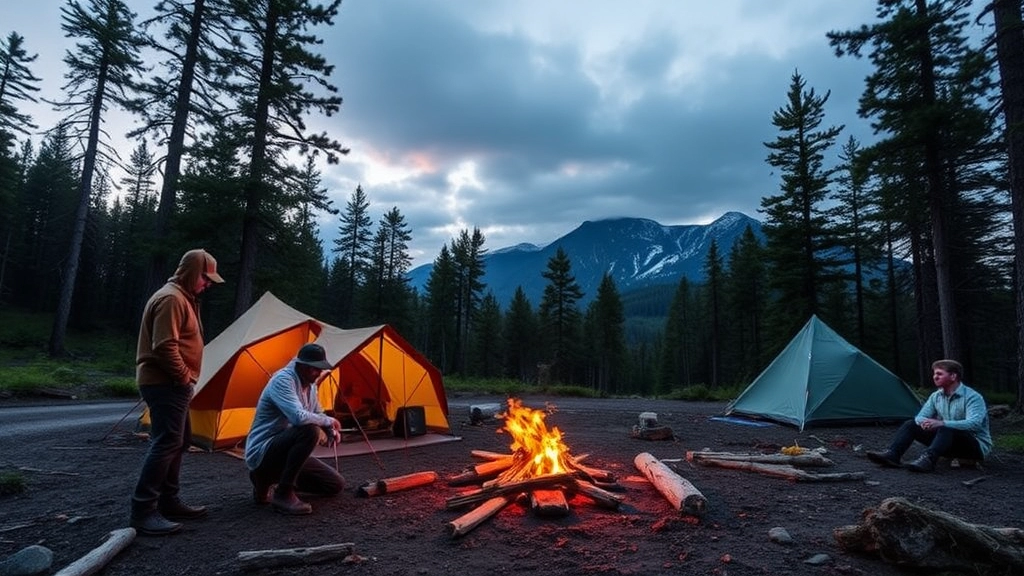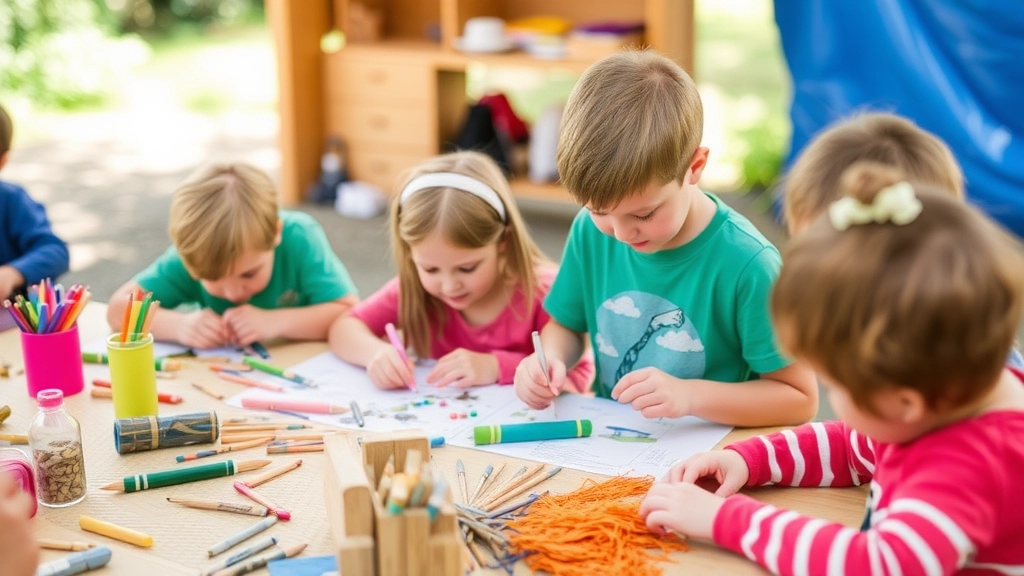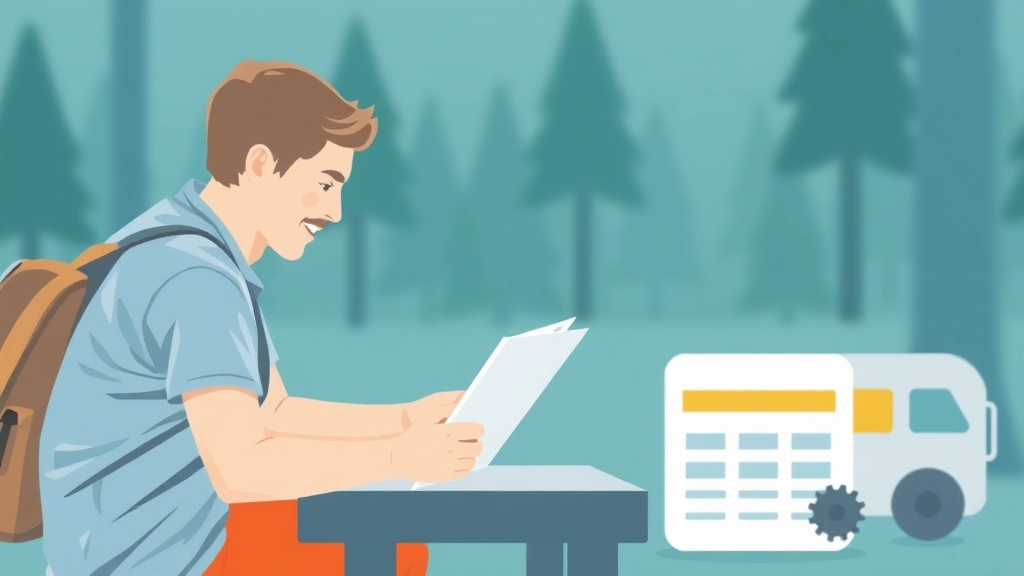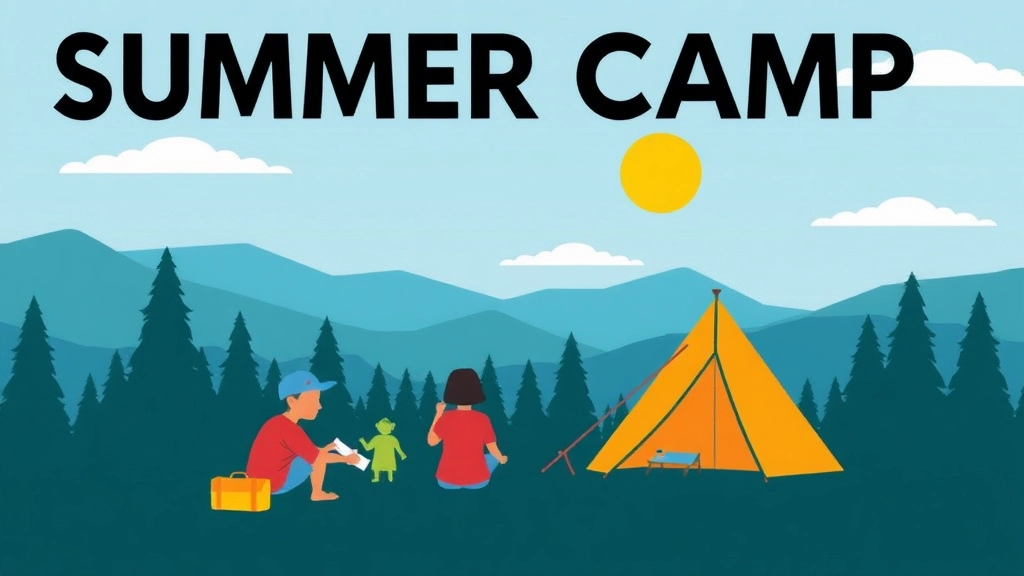Planning a Summer Camp
Planning a summer camp can feel like juggling a dozen balls at once, but with the right strategies, it can be a breeze. From choosing the perfect theme to developing a detailed timeline, each step is crucial to ensure a memorable and smooth-running camp. This article will guide you through every aspect of summer camp planning, offering practical advice and real-life examples to help you succeed.
What You’ll Learn
We’ll cover everything from effective recruitment and training of camp staff to crafting engaging, age-appropriate activities. Learn how to manage your budget, ensure safety and health protocols, and implement marketing strategies to attract campers. Plus, we’ll dive into streamlining the registration process, preparing essential gear, and gathering post-camp feedback for continuous improvement.
Who This Guide Is For
Whether you’re a seasoned camp director or a newbie, this comprehensive guide will set you on the path to a successful summer camp.
Choosing the Right Summer Camp Theme
Alright, let’s get real. Picking the right summer camp theme is like choosing the perfect playlist for a road trip. You want it to be exciting, memorable, and something everyone can vibe with. But how do you nail it down? Here are some real questions and worries you might be facing:
- What if the theme doesn’t resonate with the kids?
- How can I make sure the theme is both fun and educational?
- What if the theme is too niche and limits our activities?
Let’s dive into how you can tackle these concerns and pick a killer summer camp theme.
Start with Your Audience
First things first, know your campers. Are you dealing with a bunch of energetic 7-year-olds or a group of curious teens? The age group will significantly influence your theme choice. Here’s how you can get a better understanding:
- Surveys and Questionnaires: Send out pre-camp surveys to parents and kids to gather insights on their interests.
- Past Feedback: Look at feedback from previous camps to see what themes were hits and what flopped.
Brainstorm Theme Ideas
Once you’ve got a grip on your audience, it’s time to brainstorm. Here are some popular themes that have stood the test of time:
- Adventure and Exploration: Think treasure hunts, nature walks, and survival skills.
- Science and Discovery: Perfect for the curious minds who love experiments and learning about the world.
- Arts and Crafts: Ideal for creative souls who enjoy painting, sculpting, and crafting.
- Sports and Fitness: For the active campers who love to stay on the move.
Evaluate Feasibility
Now, let’s get practical. It’s one thing to dream up an amazing theme, but can you actually pull it off? Consider these factors:
- Resources: Do you have the necessary materials and facilities?
- Staff Expertise: Do your staff members have the skills to lead activities related to the theme?
- Budget: Can you afford the costs associated with the theme?
Add a Twist
To keep it fresh and engaging, add a unique twist to your theme. If you’re going with an “Adventure and Exploration” theme, maybe incorporate a storyline where campers are explorers on a mission to find a lost city. This adds an extra layer of excitement and immersion.
Test the Waters
Before you go all-in, test your theme on a smaller scale. Maybe run a weekend camp or a day event to see how well it’s received. This will give you valuable feedback and help you make any necessary tweaks.
Real-Life Example
Last summer, we chose a “Space Exploration” theme. We were a bit worried it might be too complex for the younger kids, but we broke it down into simple, fun activities like making DIY rockets and stargazing sessions. It turned out to be a hit! The kids were engaged, and parents loved the educational aspect.
For more inspiration, check out our list of top Spanish summer camps for all ages and summer camps for junior high to find themes that have been successful in the past.
Developing a Detailed Camp Planning Timeline

Ever felt overwhelmed by planning a summer camp?
You’re not alone.
I’ve been there, and trust me, a solid timeline can save your sanity.
Why a Timeline Matters
First off, let’s talk about why you need a detailed camp planning timeline.
It’s your roadmap.
Without it, you’re driving blind.
You need to know what happens when, so nothing slips through the cracks.
Start Early
The earlier you start, the better.
Here’s a rough breakdown:
- 12 Months Out: Pick your theme. This sets the tone for everything else.
- 10 Months Out: Secure your location. Popular spots book fast.
- 8 Months Out: Start recruiting staff. You want the best, right?
- 6 Months Out: Begin marketing. Get those campers excited.
- 3 Months Out: Finalise activities. Make sure they’re age-appropriate.
- 1 Month Out: Double-check everything. This is crunch time.
Monthly Milestones
Breaking it down month-by-month makes it manageable.
- 12 Months Out: Research and pick your camp theme. Think about what will excite the kids and make parents feel good.
- 10 Months Out: Lock in your camp location. Visit the site if you can. Make sure it has everything you need.
- 8 Months Out: Start recruiting staff. Look for passionate, experienced people. Train them well.
- 6 Months Out: Kick off your marketing campaign. Use social media, email, and local events to spread the word.
- 3 Months Out: Plan your activities. Make sure they’re safe, fun, and match your theme.
- 1 Month Out: Do a final check. Confirm bookings, supplies, and staff schedules.
Weekly Check-Ins
Don’t just set it and forget it.
Have weekly check-ins.
- Team Meetings: Keep everyone on the same page.
- Progress Reports: Track what’s done and what’s not.
- Adjustments: Be ready to tweak the plan if needed.
Real Talk
I remember one year, we almost forgot to order the camp T-shirts.
Caught it just in time.
That’s why these check-ins are crucial.
Effective Recruitment and Training of Camp Staff
Alright, let’s get real. If you’re running a summer camp, you know that effective recruitment and training of camp staff can make or break the entire experience. Whether you’re a seasoned camp director or just starting out, you’ve probably faced these questions: How do I find the right people? How do I make sure they’re ready to handle anything? And how do I keep them motivated all summer long?
Why Good Staff Matters
First off, let’s talk about why having a top-notch team is crucial. Your staff are the backbone of your camp. They’re the ones who’ll be interacting with the kids, running activities, and ensuring everything goes smoothly. A great team can turn a good camp into an unforgettable one, while a poorly trained staff can lead to chaos.
Recruitment: Finding the Right Fit
So, how do you find these amazing people? Here are some practical steps:
- Job Descriptions: Be crystal clear about what you’re looking for. Outline the roles, responsibilities, and qualifications.
- Where to Look: Post on job boards, university career centres, and social media. Don’t underestimate word-of-mouth; your current staff might know someone perfect for the job.
- Interviews: Go beyond the resume. Ask situational questions to see how they handle real-life scenarios. For example, “What would you do if a camper refuses to participate in an activity?”
- Background Checks: Safety first. Always run background checks to ensure you’re hiring reliable and trustworthy individuals.
Training: Setting the Stage for Success
Once you’ve got your team, the next step is training. And I’m not talking about a boring PowerPoint presentation. You need to make sure your staff are ready for anything.
Key Areas to Cover
- Safety Protocols: This is non-negotiable. Make sure everyone knows the emergency procedures, first aid basics, and how to handle specific situations like allergies or injuries.
- Activity Training: Whether it’s archery, arts and crafts, or drama, your staff need to be experts in the activities they’ll be leading. Hands-on practice is essential here.
- Camper Interaction: Teach your staff how to engage with kids of different ages and backgrounds. Role-playing exercises can be super helpful.
- Conflict Resolution: Equip your team with strategies to handle conflicts among campers and between campers and staff.
Ongoing Support
Training shouldn’t stop on day one. Provide ongoing support throughout the summer:
- Regular Check-ins: Schedule weekly meetings to discuss what’s working and what’s not.
- Mentorship: Pair new staff with experienced ones for guidance and support.
- Feedback Loop: Create an environment where staff feel comfortable giving and receiving feedback. This helps everyone grow and improve.
Keeping Staff Motivated
A motivated team is a productive team. Here’s how to keep the energy high all summer long:
- Recognition and Rewards: Acknowledge hard work and achievements. It could be as simple as a shout-out during a staff meeting or a small gift.
- Team Building: Plan activities that allow your staff to bond and have fun together. This builds camaraderie and a sense of community.
- Open Communication: Make sure your staff feel heard. Encourage them to share their ideas and concerns.
Real Stories
Let me share a quick story. Last summer, we had a counsellor named Sarah. She was fantastic with the kids but struggled with time management. During one of our weekly check-ins, she opened up about feeling overwhelmed. We paired her with a mentor who helped her streamline her schedule. By the end of the summer, Sarah was not only more efficient but also more confident. That’s the power of effective training and support.
For more tips on running a successful summer camp, check out our Summer Camp Guide and learn about ADHD Summer Camps to find the perfect fit for every camper.
Crafting Engaging and Age-Appropriate Camp Activities

Ever wondered how to keep kids engaged at camp without them getting bored or overwhelmed?
That’s a real worry, right?
Crafting engaging and age-appropriate camp activities is key.
Let’s dive in.
Why Age-Appropriate Activities Matter
Kids of different ages have different needs and interests.
If you mix it up wrong, you lose them.
So, how do you nail it?
Understand Your Audience
First things first, know who you’re dealing with.
- Age Groups: Split them into clear age groups.
- Interests: What do they like? Sports? Arts? Science?
- Skill Levels: Are they beginners or pros?
Brainstorm Activity Ideas
Now, let’s get creative.
Here’s a quick list to get you started:
- For Younger Kids (5-8 years):
- Arts and crafts
- Simple sports like tag
- Storytelling sessions
- For Tweens (9-12 years):
- Team sports
- Treasure hunts
- DIY science experiments
- For Teens (13-17 years):
- Adventure sports
- Leadership workshops
- Tech projects
Make It Interactive
Nobody likes a lecture.
Turn activities into interactive experiences.
- Games and Competitions: Friendly contests keep the energy high.
- Hands-On Projects: Let them build, create, and experiment.
- Group Work: Collaboration teaches teamwork and social skills.
Balance Fun and Learning
It’s not just about having fun.
Kids should learn something too.
- Educational Activities: Mix in some learning with the fun.
- Life Skills: Teach them cooking, first aid, or even basic survival skills.
- Creative Thinking: Encourage problem-solving and creativity.
Adapt and Evolve
Stay flexible.
If something’s not working, switch it up.
- Feedback: Ask the kids what they like and don’t like.
- Observation: Keep an eye on their engagement levels.
- Adjustments: Be ready to tweak activities on the fly.
Real-Life Example
I remember one summer, we planned a high-tech robotics workshop for teens.
Sounds cool, right?
But guess what?
They were more interested in outdoor survival skills.
So, we adapted.
We turned it into a hybrid session with both tech and survival elements.
It was a hit.
Final Thoughts
Crafting engaging and age-appropriate camp activities isn’t rocket science.
But it does take some thought and flexibility.
Remember, the keyword here is engaging.
Keep it fresh, keep it real, and keep those kids coming back for more.
Budgeting and Financial Planning for Summer Camps
Alright, let’s talk about something that can make or break your summer camp: budgeting and financial planning. I know, I know, it sounds like a snooze-fest, but trust me, getting this right is crucial. If you’re worried about how to keep your camp financially afloat while delivering an unforgettable experience, you’re not alone. So, let’s dive in and break it down.
Why Budgeting is Non-Negotiable
First things first, why is budgeting so important? Simple. Without a solid budget, you’re flying blind. You might overspend on activities and run out of funds for essentials like food and safety gear. Or you might underfund your camp and end up with unhappy campers. Neither scenario is ideal.
Steps to Create a Rock-Solid Budget
- Identify Your Fixed and Variable Costs
Fixed costs are your non-negotiables: venue rental, staff salaries, insurance, and permits. Variable costs include food, activity supplies, and transportation. List them all out. - Estimate Your Revenue
How many campers are you expecting? Multiply that by your camp fees. But be realistic. Overestimating your revenue can lead to financial stress down the line. - Factor in Unexpected Expenses
Always have a contingency fund. Things break, weather changes, and sometimes, you just need extra marshmallows. Aim for at least 10% of your total budget. - Track and Adjust
Use budgeting software or even a simple spreadsheet to track your expenses and income. Adjust as you go along to stay on track.
Real-Life Example: A Budgeting Success Story
A friend of mine ran a summer camp last year. She followed these steps and even added a little extra for surprise guest speakers. By the end of the camp, not only did she break even, but she also had enough surplus to offer scholarships for the next season. That’s the power of good budgeting.
Tools and Resources
- Budgeting Software: QuickBooks, Wave, or even Google Sheets can be lifesavers.
- Financial Advisors: If numbers aren’t your thing, hire a financial advisor for a few hours to get you started.
- Online Forums and Communities: Places like Reddit or specialized Facebook groups can offer real-world advice and tips.
Common Budgeting Mistakes to Avoid
- Ignoring Small Costs: Those little expenses add up. Track everything.
- Overestimating Revenue: Be conservative with your income estimates.
- Skipping the Contingency Fund: Always, always have a backup fund.
Final Thoughts
Budgeting and financial planning for summer camps might not be the most exciting part of the job, but it’s definitely one of the most important. Get it right, and you’ll have the financial freedom to create an unforgettable experience for your campers. Get it wrong, and you’ll be scrambling to make ends meet. So, take the time to plan, track, and adjust. Your future selfâand your campersâwill thank you. For more tips on organizing a successful camp, check out our Essential Guide for Summer Camp Leaders.
Ensuring Safety and Health Protocols

Alright, let’s talk about the elephant in the room: safety and health at summer camps.
You know the drill: parents are worried about their kids. They want to know that their little ones will be safe, healthy, and well taken care of. And we get it.
So, let’s dive into how we can make sure everyone has peace of mind.
Why Safety and Health Protocols Matter
First things first, why are these protocols so crucial?
- Peace of Mind: Parents need to feel confident that their kids are in good hands.
- Legal Compliance: You’ve got to meet all the health and safety regulations.
- Smooth Operations: A safe camp is a happy camp. Less drama, more fun.
Key Areas to Focus On
When it comes to safety and health, there are a few key areas you can’t ignore:
Medical Preparedness
- First-Aid Kits: Stocked and ready.
- Medical Staff: Qualified nurses or first responders on-site.
- Emergency Contacts: Up-to-date and easily accessible.
Food Safety
- Allergy Management: Know who’s allergic to what.
- Clean Kitchens: Regular inspections and hygiene checks.
- Balanced Meals: Nutritious and safe for all.
Physical Safety
- Activity Supervision: Trained staff overseeing all activities.
- Safe Equipment: Regular checks and maintenance.
- Emergency Plans: Clear evacuation routes and procedures.
Real Talk: What Parents Worry About
Parents have a lot on their minds. Here are some common concerns:
- “What if my child gets hurt?” We’ve got trained medical staff and first-aid kits everywhere.
- “What about allergies?” We keep a close eye on all dietary restrictions and allergies.
- “How do you handle emergencies?” Detailed emergency plans and regular drills keep everyone prepared.
Practical Steps to Implement
Let’s break it down into actionable steps:
- Regular Training: Staff should undergo regular health and safety training.
- Clear Communication: Keep parents informed about safety measures.
- Routine Inspections: Regularly check all facilities and equipment.
- Health Checks: Daily health screenings for campers and staff.
Stories from the Campfire
Let me share a quick story.
Last summer, we had a camper with severe peanut allergies. Our team was on high alert. We had a dedicated “peanut-free” zone and made sure everyone knew the drill. Guess what? The camp went off without a hitch, and the parents were beyond grateful.
Marketing Strategies to Attract Campers
Alright, let’s get straight to it. How do we get those campers in the door? I know you’re probably wondering how to stand out in a sea of summer camps. Let’s break it down with some no-nonsense, actionable strategies.
Understanding Your Audience
First things first, who are we talking to? Parents and kids, right? But not just any parents and kids. You need to know:
- Ages and interests of the kids
- Concerns and priorities of the parents
Leveraging Social Media
Social media isn’t just for selfies and memes. It’s a goldmine for marketing your summer camp. Here’s how to make it work:
- Create engaging content: Share photos and videos of past camps. Show the fun, the learning, the adventures.
- Use targeted ads: Facebook and Instagram let you target specific demographics. Use this to your advantage.
- Engage with your audience: Reply to comments, answer questions, and keep the conversation going.
Building a Killer Website
Your website is your camp’s storefront. Make it count:
- User-friendly design: Easy navigation, clear information, and a simple registration process.
- SEO-optimised content: Use keywords like “summer camp”, “kids activities”, and “fun learning” throughout your site.
- Testimonials and reviews: Parents trust other parents. Show off those glowing reviews.
Email Marketing
Email isn’t dead. Far from it. It’s a direct line to potential campers and their parents:
- Regular newsletters: Keep them updated on what’s new, early bird discounts, and special events.
- Personalised emails: Tailor your messages to different age groups and interests.
Partnering with Schools and Community Centres
Get local. Partner with schools, community centres, and youth organisations:
- Flyers and brochures: Old school but effective. Make sure they’re eye-catching and informative.
- Presentations and workshops: Offer to do a talk or a fun activity at local schools.
Offering Early Bird Discounts
Everyone loves a good deal. Early bird discounts can create a sense of urgency:
- Limited-time offers: Make it clear that these discounts won’t last forever.
- Referral discounts: Encourage current campers to bring their friends.
Highlighting Unique Selling Points (USPs)
What makes your camp different? Highlight your USPs:
- Specialised activities: Do you offer something unique like coding classes or wilderness survival skills?
- Experienced staff: Showcase the qualifications and experience of your team.
Engaging Content Marketing
Content is king. Create valuable content that attracts and retains your audience:
- Blog posts: Write about the benefits of summer camps, tips for parents, and fun activities.
- Videos and Vlogs: Show behind-the-scenes footage, interviews with staff, and camper testimonials.
Utilising Influencers and Ambassadors
Influencers aren’t just for beauty products. Find local influencers or past campers to spread the word:
- Social media takeovers: Let them take over your social media for a day.
- Guest blogs or vlogs: Have them share their experiences and why they love your camp.
Measuring and Adjusting Your Strategy
Finally, always be measuring and tweaking:
- Analytics tools: Use Google Analytics, social media insights, and email marketing metrics.
- Feedback surveys: Ask parents and campers what they liked and what could be improved.
Streamlining the Camper Registration Process

Ever feel like the camper registration process is more of a nightmare than it should be?
Yeah, me too.
Let’s simplify it.
Here’s how to streamline the camper registration process so you can save time, reduce stress, and get more kids signed up.
Why It’s Crucial
First off, why does this even matter?
Because a smooth registration process can be the difference between full camps and empty ones.
Parents want quick, easy, and reliable.
You want full camps.
Win-win.
Steps to Simplify Registration
1. Go Digital
Paper forms? So last century.
- Use an online registration system.
- Automate confirmations and reminders.
- Integrate payment options.
2. User-Friendly Interface
Make it idiot-proof.
- Clear instructions.
- Simple forms.
- Mobile-friendly design.
3. Clear Communication
Parents have questions.
- FAQs on your site.
- Chat support.
- Quick response times.
4. Early Bird Incentives
Encourage early sign-ups.
- Offer discounts.
- Special perks for early birds.
5. Data Collection
Gather essential info without overloading.
- Basic details upfront.
- Additional info later.
Real-World Example
A camp I worked with had a clunky registration process.
Parents were frustrated.
We switched to an online system.
Sign-ups doubled.
Parents were happy.
Preparing Essential Gear and Supplies
Alright, let’s talk about something that’s on every camp organiser’s mind: preparing essential gear and supplies. You might be asking yourself, “What exactly do I need to ensure my summer camp runs smoothly?” Well, you’re in the right place. Let’s break it down, step by step.
The Basics: What Every Camp Needs
First off, let’s get the basics out of the way. Here’s a quick list of must-have items for any summer camp:
- First Aid Kits: You can’t run a camp without these. Make sure they’re well-stocked with bandages, antiseptics, and other medical essentials.
- Sleeping Gear: Think tents, sleeping bags, and mats. Comfort is key.
- Cooking Equipment: Portable stoves, pots, pans, and utensils. Don’t forget the fuel!
- Safety Gear: Helmets, life jackets, and any other protective equipment relevant to your activities.
Age-Appropriate Gear
Different age groups have different needs. For younger kids, you might need:
- Child-sized life jackets
- Simple, easy-to-use utensils
- Extra bedding and comfort items like stuffed animals
For teenagers, consider:
- More advanced camping gear
- Sports equipment
- Tech gadgets for specific activities
Activity-Specific Supplies
Now, let’s get into the nitty-gritty. Depending on your camp’s theme and activities, you’ll need specialised gear. For example:
- Adventure Camps: Ropes, climbing gear, and navigation tools like compasses and maps.
- Arts and Crafts Camps: Paints, brushes, clay, and other creative supplies.
- Sports Camps: Balls, nets, racquets, and other sports equipment.
Real Talk: Budget Constraints
I get it, budgets are tight. But skimping on essential gear can lead to bigger problems down the line. Here’s a pro tip:
- Bulk Buying: Purchase in bulk to save money.
- Second-Hand Supplies: Look for gently used gear that’s still in good condition.
- Donations: Reach out to parents and local businesses for donations. You’d be surprised at how generous people can be.
Storage and Organisation
Once you’ve got all your gear, the next challenge is storing it. A disorganised storage area can lead to lost items and chaos. Here’s how to keep things tidy:
- Label Everything: Use clear labels for easy identification.
- Inventory Lists: Keep a detailed list of all items and their locations.
- Regular Checks: Do weekly checks to ensure everything is in its place and in good condition.
Real-Life Example
Let me tell you about a time when we almost forgot the cooking equipment for a summer camp. We had everything elseâtents, sleeping bags, even the marshmallows for s’moresâbut no way to cook them! Luckily, a quick inventory check saved the day. We managed to borrow some portable stoves from a nearby camp just in time.
Post-Camp Feedback and Reflection
Ever wondered what campers really think about your summer camp?
Getting post-camp feedback can feel like a mystery, but it’s crucial for growth.
Let’s dive into how we can make it work.
Why Feedback Matters
Feedback isn’t just a box to tick.
It’s the key to understanding what worked and what didn’t.
Why should we care?
- Improve Future Camps: Spot areas for improvement.
- Boost Camper Satisfaction: Make campers happier next time.
- Build Trust: Show you care about their experience.
Gathering Feedback
How do we get this golden info?
Here’s what I do:
- Surveys: Simple and direct. Use online tools for quick responses.
- One-on-One Chats: Personal touch. Get detailed insights.
- Feedback Forms: Easy to fill out on the last day.
Reflecting on Feedback
Got the feedback. Now what?
Here’s the game plan:
- Analyse the Data: Look for patterns and trends.
- Create an Action Plan: Set clear goals for improvement.
- Involve the Team: Share insights and brainstorm solutions.
Real Stories, Real Insights
Once, a camper told me they loved the activities but wanted more variety.
We mixed it up the next year, and satisfaction went through the roof.
Keep It Fresh
Feedback isn’t a one-time gig.
It’s an ongoing conversation.
- Regular Check-ins: Keep the dialogue open.
- Adapt and Evolve: Stay ahead of the game.
Final Thoughts
Post-camp feedback is your secret weapon.
Use it wisely, and your summer camp will only get better.
For more ideas on how to keep your camp engaging, check out our Creative Summer Camp Theme Weeks and learn about the Top Benefits of Church Summer Camps.
FAQs on Summer Camp Planning
Why is a detailed camp planning timeline important?
A detailed timeline acts as your roadmap, ensuring nothing slips through the cracks. It helps you know what needs to happen and when, so you’re not caught off guard.
When should I start planning for a summer camp?
The earlier, the better. Ideally, start 12 months in advance to set the theme, secure locations, recruit staff, and market effectively.
How can I ensure the activities are age-appropriate?
Understand your audience by splitting them into age groups, knowing their interests, and assessing their skill levels. This helps in crafting engaging activities tailored to their needs.
What are some tips for making camp activities engaging?
Make activities interactive with games, hands-on projects, and group work. Balance fun with learning by incorporating educational elements and life skills.
How do I ensure safety and health at camp?
Focus on medical preparedness, food safety, and physical safety. Regular training, clear communication, and routine inspections are key to maintaining a safe environment.
What steps can I take to streamline the camper registration process?
Go digital with an online registration system, ensure a user-friendly interface, provide clear communication, offer early bird incentives, and collect essential data efficiently.
How can I effectively communicate with parents about camp safety?
Keep parents informed through regular updates, address common concerns, and ensure they know about your safety protocols and emergency plans.
What should I do if something isn’t working during camp?
Stay flexible and be ready to adapt. Gather feedback, observe engagement levels, and make necessary adjustments to improve the experience.
References
-
Developing a Detailed Camp Planning Timeline
-
Crafting Engaging and Age-Appropriate Camp Activities
-
Ensuring Safety and Health Protocols

